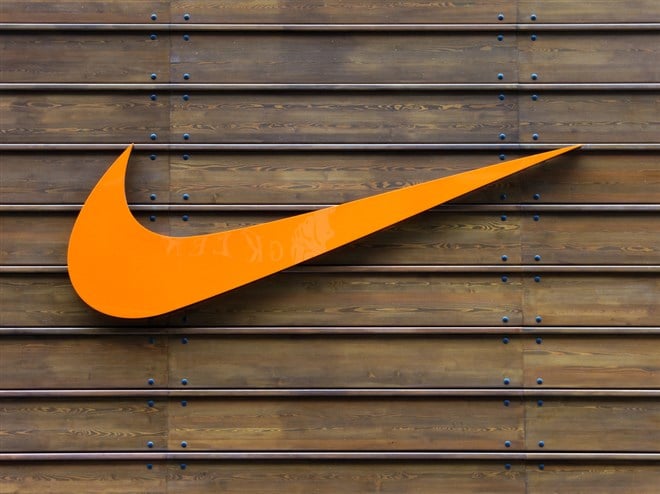
Nike (NYSE: NIKE) has been put on the watchlist of many investors following its sell-off. The company is currently down -32.94% YTD and significantly trails behind the S&P 500 at a -14.16% decline. Investors are watching this stock closely due to its performance significantly beating the S&P 500 over a long timeframe. The company returned 383.12% over the last ten years, while the return for this index returned 199.72%. Still, there are some challenges ahead for the company as it battles weakening growth prospects, and some still believe Nike to be an expensive pick. We will examine both the pros and cons of this stock to see if it deserves a spot in your portfolio.
Nike’s Valuation
Despite losing a considerable amount of the value of the stock, Nike's P/E ratio is still considerably higher than its peers in the consumer discretionary sector. The company's FWD P/E is 29.72, while the sector median is 13.41. To give an example of how it stacks up against one of its key competitors, Wolverine WorldWide (NYSE: WWW) has a P/E of 9.90. One could interpret Nike's higher than the sector median's P/E ratio in a couple of different ways. The company's long-term prospects could be seen as more attractive, so it, therefore, commands a higher price. The alternative interpretation is that it is relatively more inexpensive without the additional upside potential.
One thing to note about Nike's valuation is that it has fallen to near-record lows. The only time it was as low as 27 to 29 was in 2017 which is when a sector rotation occurred out of consumer discretionary stocks. The company's EPS was also significantly lower during this period as it hovered around the $2.30 mark, while today, that figure rests at $3.75. Consumer discretionary stocks are typically one of the first sectors to experience a contraction in value prior to a recession, so its sell-off could partially be explained by this despite the higher earnings per share.
Bearish Growth and EPS Estimates
One factor that's holding the stock back from reaching new heights is the contraction in its YoY and FWD revenue growth estimates. The company's revenues are currently growing at an anemic rate compared to the industry sector with 4.88% compared to the median of 20.27%. Its FWD revenue projections are also not holding up that much better, with 7.88% compared to the sector median of 13.87%.
Some companies are performing much stronger than Nike on an FWD revenue basis, including Crocs (NASDAQ: CROX), with an FWD revenue projection of 41.27%. The company is also beating Nike on a 5-year revenue CAGR basis with 6.34% compared with 19.65%.
Wall St seems to be in consensus with the bearish expectations for Nike over the short term for both its EPS and future revenues. Over the last three months, there have been 18 down EPS revisions and 26 down revenue revisions by analysts. Still, and perhaps due to the stock's deep discounting, the stock still holds a consensus buy recommendation from analysts, with 17 analysts giving it a strong buy recommendation and nine analysts giving it a buy recommendation. The stock is currently 24.4% below the MarketBeat consensus price target.
Nike Has Strong Margins and Profitability
One of Nike's biggest positives is that it beats its competitors in terms of its margins and overall profitability. The company has a gross profit margin of 45.98%, while the sector lags at 37.05%. Other metrics such as its net income margin are also strong at 12.94% compared to just 6.56% for the sector.
Nike is also a cash-generating machine with a TTM cash from operations of 5.91B, while the sector only generates 130.72M. It's also relatively more efficient at generating value from its capital and assets, as its return on total capital is at 15.60% compared to 7.13%. Human capital is also a strength for the brand, as the net income per employee of Nike is 76.43K while the sector generates 14.83K per employee.






